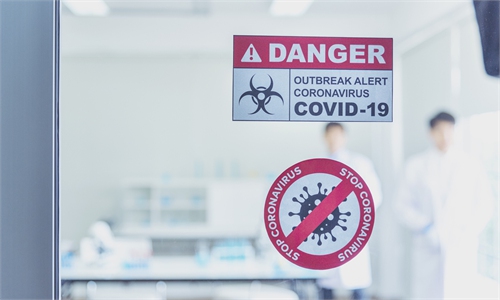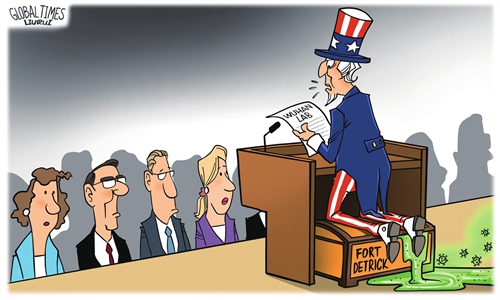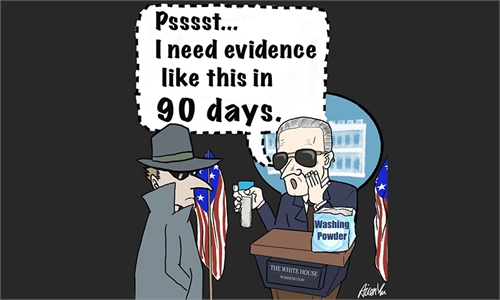Exclusive: Lead Chinese scientist of WHO joint team suggests investigating frozen food suppliers for Huanan seafood market in 2nd-stage virus tracing
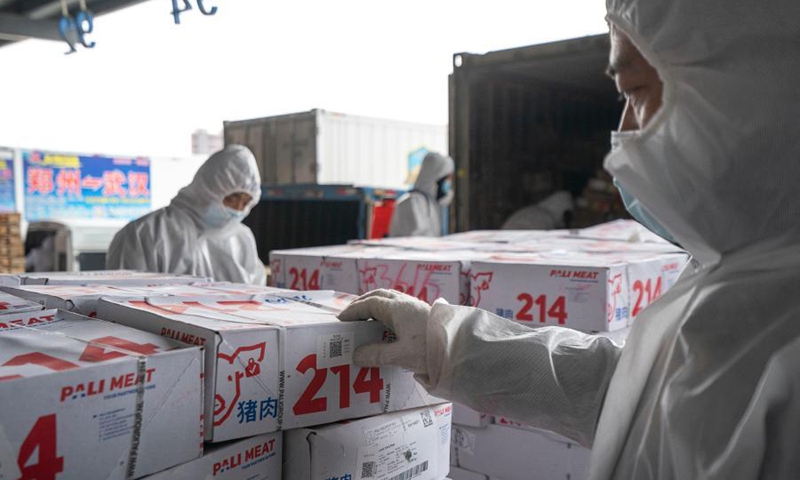
Staff members paste QR codes on imported cold chain food for traceable management at a regional cold chain center in Wuhan, capital of central China's Hubei Province, Jan. 7, 2021. Photo: Xinhua
Three months after US President Joe Biden requested a more in-depth review of the origins of novel coronavirus, the US intelligence community released an unclassified report, which showed that the community was split on the origins and offered no conclusive answers.
During the past three months, the US has been hyping the "lab leak" theory and has launched what Chinese experts termed a "political war" against China to smear the country as the "source of the coronavirus disease" in an attempt to "consume China's diplomatic resources" and "contain China's rising influence in the Asia-Pacific Region."
In an exclusive interview with the Global Times, Liang Wannian, team leader of the Chinese side of the WHO-China joint expert team, reiterated that the Wuhan Institute of Virology (WIV) had never contacted, stored, or studied any novel coronavirus before December 30, 2019. It had also never designed, manufactured, or leaked the novel coronavirus.
He suggested that for the second-stage investigation, the WHO should carry out research in countries where earlier suspected cases had been reported or where novel coronavirus was detected in samples earlier than the Wuhan outbreak.
"The next stage of study should refer to the research framework and method of the virus origins probe conducted in China. The WHO should carry out research in countries where sewage, serum, human or animal tissue/swab and other samples tested positive for SARS-CoV- 2 before the end of 2019 to further understand the origins of the virus in local places and possible human infection status. Some of the research may have been partially completed or documented. Therefore, the second-stage research should build on existing information, reinforce the work rather than duplicate ongoing or existing work," Liang said.
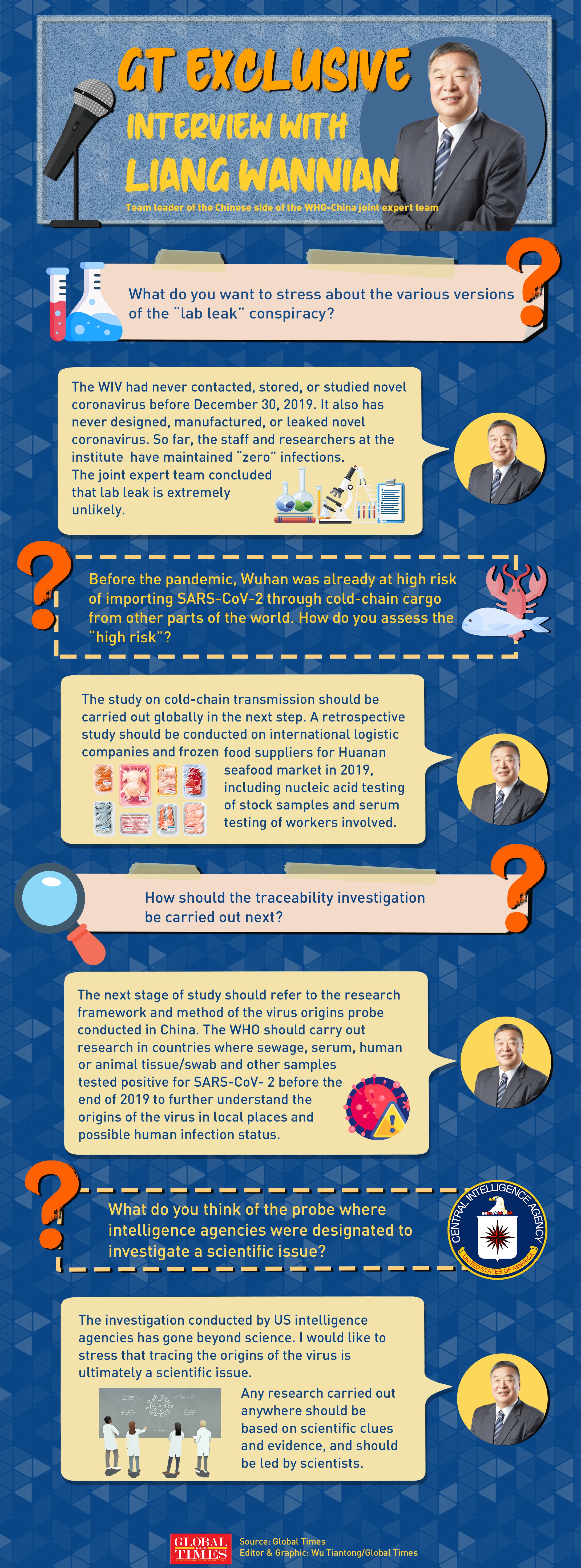
Infographic: Wu Tiantong/Global Times
Whether it is early cases, biological samples, gene sequences, natural hosts, intermediate hosts, or cold chains, it is necessary to carry out joint research in many countries, many places around the world, Liang stressed, noting that understanding the processes how the virus made cross-species transmission and then spread globally requires an in-depth understanding of the diversity and evolution of the virus in animal hosts, the interactions between animals, the environment and humans, as well as the factors that contribute to efficient human-to-human transmission.
According to an academic report recently published by nine scientists, as a hub of international communication, Wuhan received extensive international flights from cities around the world before the SARS-CoV-2 pandemic. Notably, many of these flights to Wuhan departed from Southeast Asian countries that overlap with the Rhinolophus and pangolin distributions, as well as multiple known sarbecoviruses.
The WHO-China joint study report also says that there is a possibility of novel coronavirus introduction through the cold chain/food. Therefore, before the pandemic, Wuhan was already at high risk of importing SARS-CoV-2 through cold-chain cargo from other parts of the world.
China first detected that the novel coronavirus can be transmitted at long distances via cold chain transports. The detection is based on the epidemiological research in the Xinfadi outbreak in Beijing on June 11, 2020, which showed that the virus strain that caused the outbreak was imported from countries or regions outside China, and that the cold chain may be a new vector of virus transmission.
Another outbreak occurred in Qingdao, East China's Shandong Province in October 2020 also proved that the cold chain is one of the sources of transmission of novel coronavirus.
"At the beginning of the outbreak, we had no such understanding. Therefore, we had never thought of the cold-chain possibility in sampling and testing. Now, looking back, the early outbreak in Huanan seafood market in Wuhan might have been triggered by cold-chain food," Liang said.
The study on cold-chain transmission should be carried out globally in the next step, Liang suggested "a retrospective study should be conducted on international logistic companies and frozen food suppliers for Huanan seafood market in 2019, including nucleic acid testing of stock samples and serum testing of workers involved."
Liang also denounced the investigation conducted by US intelligence agencies as "gone beyond science."
"Tracing the origins of the virus is ultimately a scientific issue. Any research carried out in anywhere should be based on scientific clues and evidence, and should be led by scientists. Blindly politicizing the issue of virus traceability does no good to the advancement of the traceability research," Liang said, hoping that the international community will truly take the traceability work as a scientific issue, get rid of political interference, actively, and steadily promote the continuous traceability in many countries around the world, strengthen scientific cooperation and exchanges on traceability.
